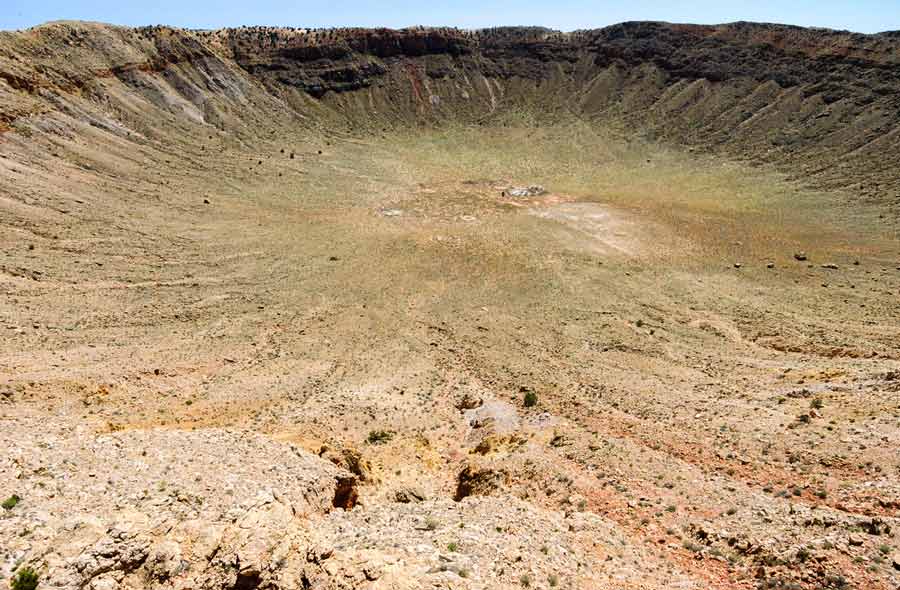The views expressed in our content reflect individual perspectives and do not represent the authoritative views of the Baha'i Faith.
When we contemplate this vast machinery of omnipresent power, perceive this illimitable space and its innumerable worlds, it will become evident to us that the lifetime of this infinite creation is more than six thousand years; nay, it is very, very ancient. – Abdu’l-Baha, The Promulgation of Universal Peace, p. 463.
In this series of essays, we’re looking at five of the great unanswered scientific questions: why does the universe exist; what is the universe made of; does life exist anywhere else, how does human biology work: and how does the Earth work?
Those scientifically-unanswered questions come from Caleb Scharf—the well-known scientist, astronomer, author and director of the Astrobiology Center at Columbia University—who wrote a 2014 article for Scientific American called This Is What We Don’t Know about the Universe. In it, he pondered the biggest question science hasn’t answered about our home planet; and called our startling lack of knowledge about it “an epic fail:”
No human, or robot, has ever physically traveled deeper than a few miles into the Earth’s crust, everything else is extrapolation and interpolation from ’remote sensing’ and clever physical analyses. It took us a ridiculously long time to figure out that the outer planetary skin is moving and sliding around; plate tectonics was not generally accepted until the mid-20th century! We’re still not sure exactly how the inner dynamo works, how rolls of convecting, conducting material in the outer core generate our planetary magnetic field. There’s also so much mess after 4.5 billion years of geophysics that some of our best information about the planet’s origins come from meteorites and the cratering of other worlds—outsourced. Speaking of other worlds, we’re not even sure we understand where the Moon came from, maybe it was a giant impact, maybe not. For an allegedly clever species on a small rocky planet this is a bit of an epic fail.
Let’s just take a single part of Dr. Scharf’s question and examine it: the age of the Earth. For centuries, fundamentalist Christians believed—and many still believe—that the Bible proves the Earth is only six thousand years old. (http://creation.com/how-old-is-the-earth) This “creationist” point of view typically opposes the science of evolution and insists on a purely Biblical interpretation of the age of the planet, derived from the calculated time-span of Biblical genealogies and various Bible verses.
Most scientists believe, from the little we know about the Earth, however, that it has existed for somewhere in the neighborhood of four and a half billion years. Big difference, right?
Since we can’t yet dig down to the center of earth, we’ve outsourced our knowledge about its age by analyzing the age of meteorites. The best-known analysis—of the Canyon Diablo meteorite that made the Barringer Meteor Crator in northern Arizona—dates back 4.5 billion years. Scientists theorize that the Canyon Diablo meteorite was created from the same primitive cosmic material that originally formed the disc of our sun and all the solar system’s planets. The Canyon Diablo meteorite then struck the Earth’s surface about 50,000 years ago. Since we have large fragments of that meteorite, we know by comparing the ratios of the lead isotopes in those fragments that the meteorite is 4.550 billion years old, plus or minus 70 million years.

The Baha’i teachings don’t give a specific number for the age of the Earth—but they agree with the science:
Each of the luminous bodies of this limitless firmament has its cycle of revolution, that period wherein it completes the full circuit of its orbit before beginning a new one. The earth, for example, completes a revolution every 365 days, five hours, forty-eight minutes and a fraction, and then begins anew along the same orbit. In the same way, the entire universe, whether with respect to the realm of nature or the realm of man, proceeds through cycles of major events and occurrences.
When a cycle comes to a close, a new one is inaugurated, and the previous cycle, on account of the momentous events which transpire, vanishes so entirely from memory as to leave behind no record or trace. Thus, as you are aware, we have no record of twenty thousand years ago, even though… life on this earth is very ancient—not one or two hundred thousand, or even one million or two million years old; it is ancient indeed, and the records and traces of ancient times have been entirely obliterated. – Abdu’l-Baha, Some Answered Questions, newly revised edition, p. 182.
Everyone would likely agree that four and a half billion years fits Abdu’l-Baha’s definition of “ancient indeed.” We know, scientifically, that even human beings have existed for much longer than the Biblical 6,000-year estimate:
How then is a time conceivable when this sovereignty has not been existent? This divine sovereignty is not to be measured by six thousand years. This interminable, illimitable universe is not the result of that measured period. This stupendous laboratory and workshop has not been limited in its production to six thousand revolutions of the earth about the sun. With the slightest reflection man can be assured that this calculation and announcement is childish, especially in view of the fact that it is scientifically proved the terrestrial globe has been the habitation of man long prior to such a limited estimate. – Abdu’l-Baha, The Promulgation of Universal Peace, p. 219.
That’s one of the many reasons the Baha’i teachings call for the essential harmony of science and religion.
















Comments
Sign in or create an account
Continue with Googleor